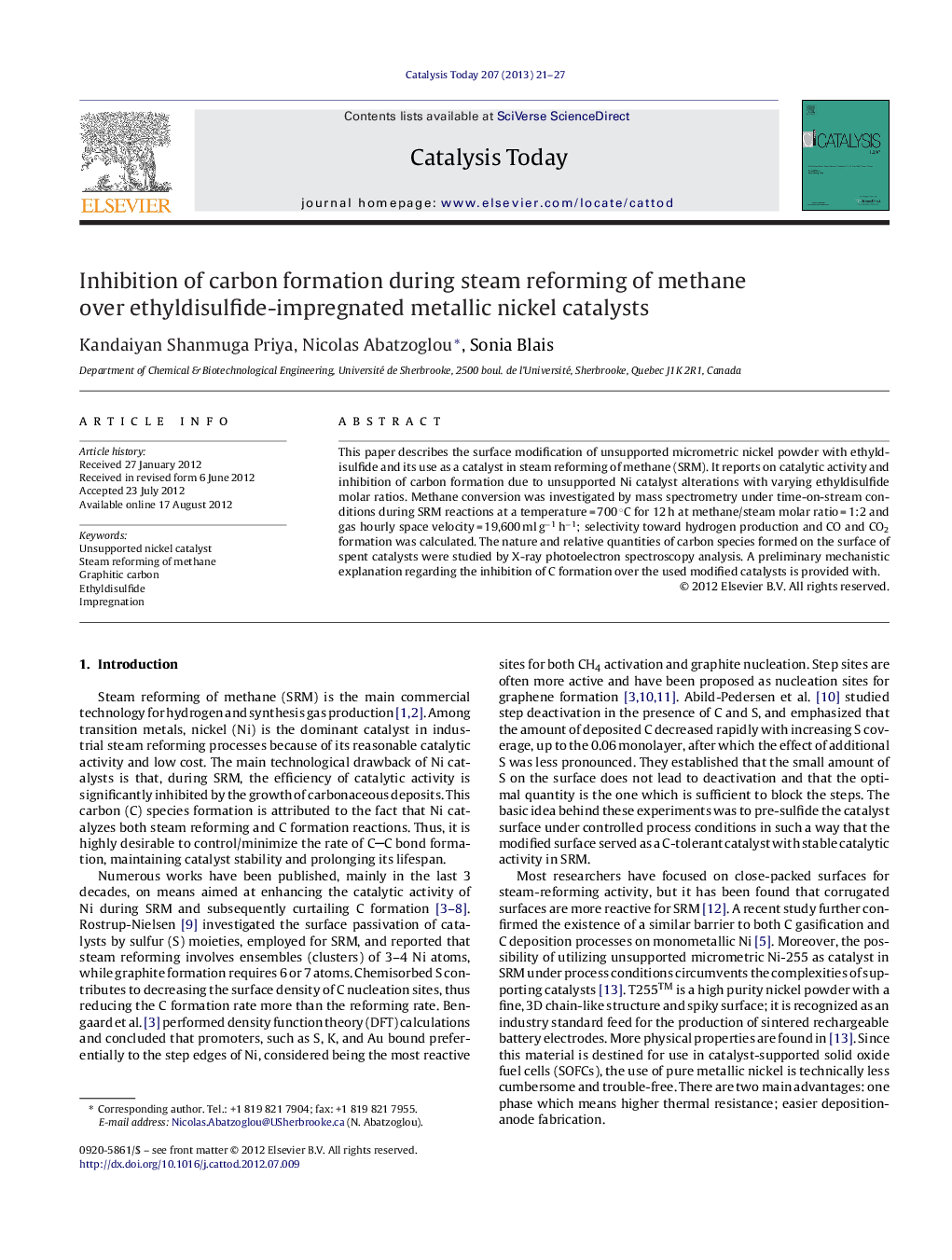| Article ID | Journal | Published Year | Pages | File Type |
|---|---|---|---|---|
| 54856 | Catalysis Today | 2013 | 7 Pages |
This paper describes the surface modification of unsupported micrometric nickel powder with ethyldisulfide and its use as a catalyst in steam reforming of methane (SRM). It reports on catalytic activity and inhibition of carbon formation due to unsupported Ni catalyst alterations with varying ethyldisulfide molar ratios. Methane conversion was investigated by mass spectrometry under time-on-stream conditions during SRM reactions at a temperature = 700 °C for 12 h at methane/steam molar ratio = 1:2 and gas hourly space velocity = 19,600 ml g−1 h−1; selectivity toward hydrogen production and CO and CO2 formation was calculated. The nature and relative quantities of carbon species formed on the surface of spent catalysts were studied by X-ray photoelectron spectroscopy analysis. A preliminary mechanistic explanation regarding the inhibition of C formation over the used modified catalysts is provided with.
Graphical abstractFigure optionsDownload full-size imageDownload high-quality image (133 K)Download as PowerPoint slideHighlights► EDS-impregnated metallic Ni is an efficient SRM catalyst, resistant to C deposits formation. ► The molarity of EDS impregnation goes through a maximum at which C formation tendency declines. ► Graphitic carbon formation plays a more significant than so far believed role in catalysts loss of SRM activity.
